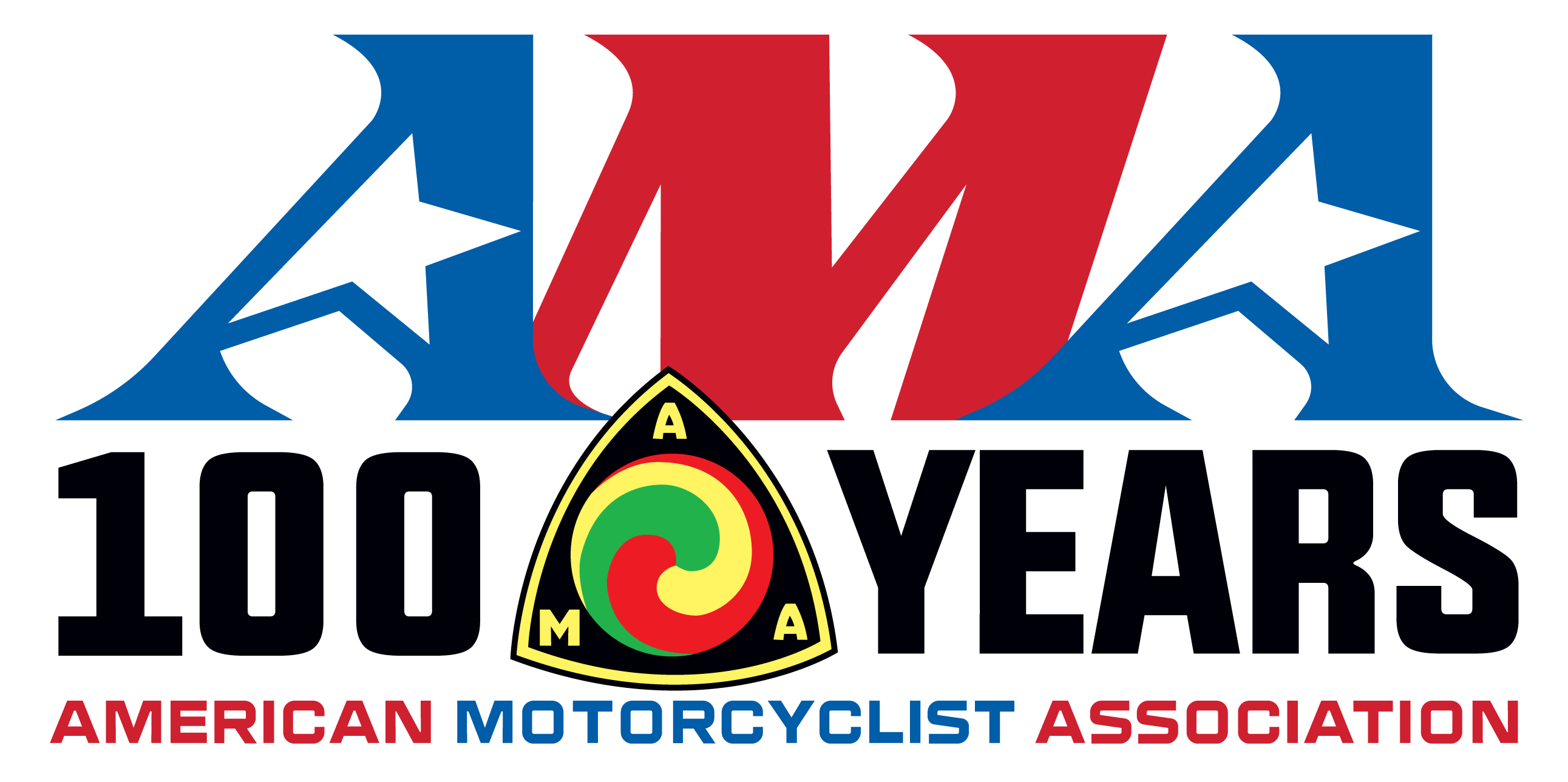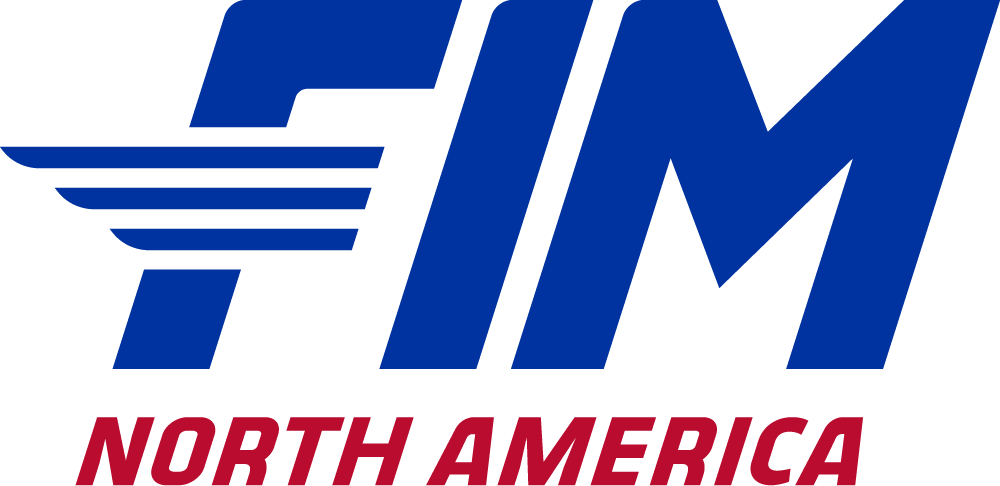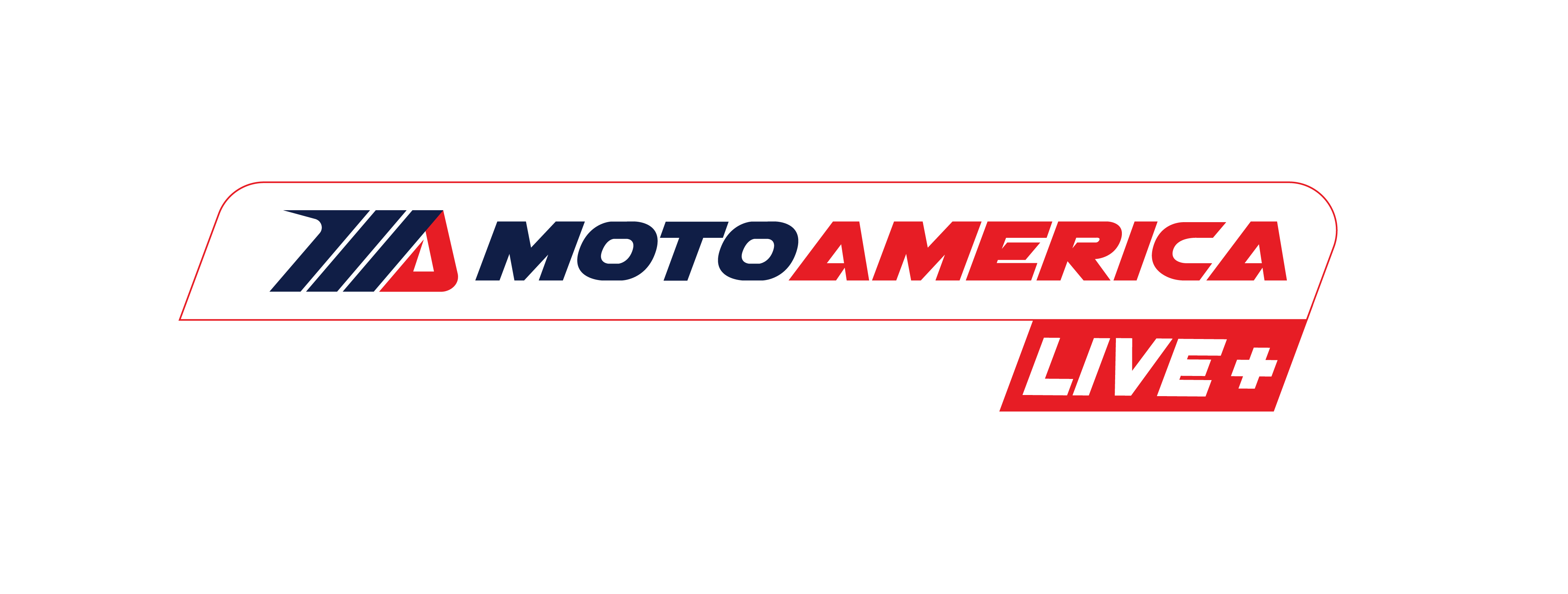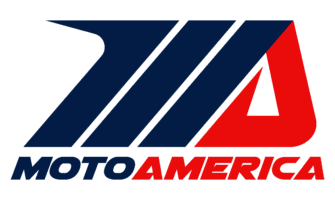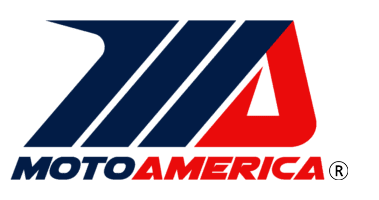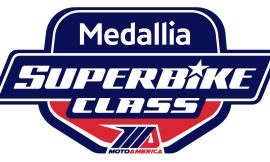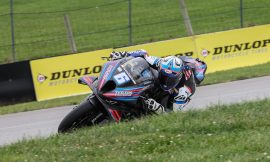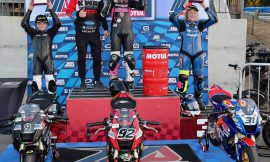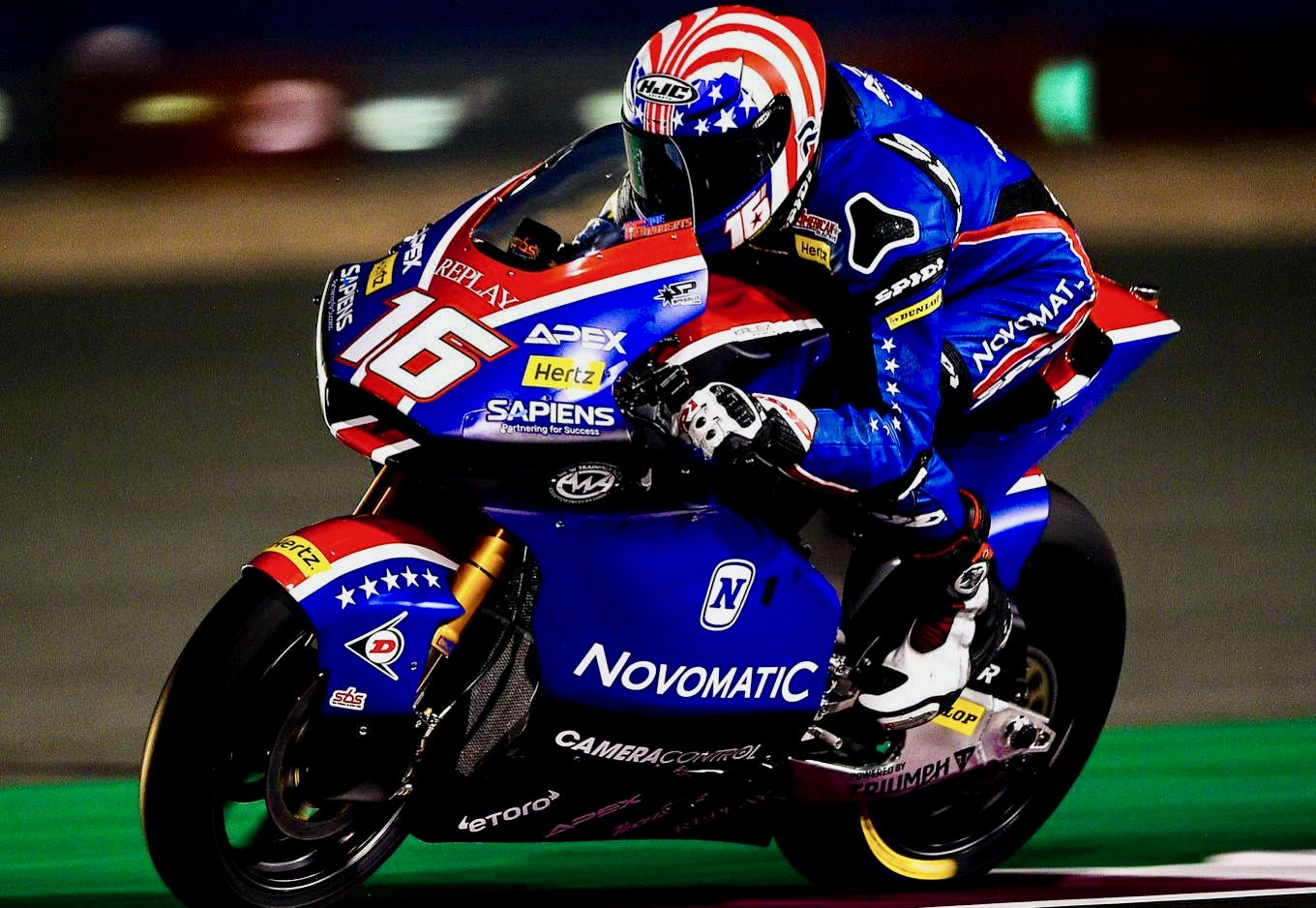
For Los Angeles-based real estate developer Eitan Butbul, “American Racing” is not just the name of the Moto2 racing team that he owns and manages, it is an entire philosophy. Butbul’s passion project and mission are the same as MotoAmerica’s: to develop U.S. motorcycle road racers into World Champions.
We talked with Butbul and learned about him, his U.S. patriotism, his rapidly growing team, and his plan to put Americans on podiums on the world stage.
Let’s start with your background. Obviously, we started to learn about you because of Moto2 and your team. We had Joe Roberts on our podcast, and we asked him, “Why is it called American Racing”? And, of course, he mentioned you. Can you talk about the background of the team and how you got involved in this? Is it your passion for racing?
I’ve been riding motorcycles for years, since I was 14. So, this is my real passion, motorcycles. I used to go to all the races – not all of them; most of them in Europe in MotoGP for many, many years. Over the past six, seven years, I started to get involved a little bit behind the scenes as a sponsor of the LCR Honda team. In 2017, I met Joe over here in Malibu. I saw that it was a young kid from LA going to be at the World Championship. So, I said, okay, I need to see if I can help him or support him or sponsor him or do something. I called him. We met in Malibu. That’s it. After the next few weeks of conversation, I talk with his dad, we discuss. Then we decided that I’m going to start to work with him as his manager/agent. So, through this conversation that was started just to support him, I start working with him in 2018 at the championship. We end up signing contract with the Swiss team. I don’t know if you remember the name. The Swiss team that Thomas Luthi used to ride with. So, we ended up signing for 2019 and 2020 with the Swiss team. At the end of 2018, the team owner called me and asked for my financial help. Then we found out that the team was in a really bad situation. I stepped in to help them as a partner and then the team owner just disappeared, so I decided to take the team. It was two options. Either to lose a few hundred thousand that I invested already, and Joe losing his ride for 2019, or I put much more money in and take over the team completely so Joe will have the ride, and we can do something different from here in the U.S. Because we are operating from here in the U.S. and Joe is my rider, and also because I know that there is a lack of support and some kind of structure for young American riders to come to the World Championship, we decided to call the team “American Racing.” Joe obviously got the ride in 2019. It wasn’t the best year for us. We started from zero, and it took us a few months to understand the situation and deal with a lot of issues that existed with the previous ownership. But we managed to finish the season in a good way.
When we talked to Joe, and we’ve read things and been paying attention to everything that went on at that first round in Qatar, from your perspective, what made the difference for him? What clicked for him in Qatar?
I think the biggest difference is the confidence. Last year, it was a new bike for him, and the KTM wasn’t the best fit. It was a difficult bike for everybody on the grid who used the KTM. For Joe, it just wasn’t the right bike. I think, also, the crew chief wasn’t the best matchup for Joe. I think the big change came after we realized what we needed to do with Joe. He needed much more confidence and to feel that he had full support. So, we changed the crew chief, and changed the bike. We switched to Kalex, which, I think, is the best bike on the Moto2 grid. We brought in a new crew chief who used to work with Sam Lowes. We brought in an additional engineer who used to be a crew chief with Tech 3. And, we brought in John Hopkins. I think John is one of the keys that lead to the change in Joe. John gave Joe the confidence and worked with him over the winter. Obviously, it’s paid off completely.
How did John Hopkins come into the team?

As soon as we finished in 2019, I said that I need to go full gas all the way. If we’re in the championship, I need to make this one of the best teams in the paddock. I want to win the championship as American Racing, period. So, I was looking to see who I can bring in who was a previous rider, somebody who has a name, who knows what he’s doing, who already made the journey inside MotoGP and can help me work with the riders. I talked to Johnny Louch from the W, who is a good friend of mine, and he told me about John Hopkins. So, I called him, and he came to my office. I think, after one hour of talking, I said, “Okay, that’s it. This is the guy I want to work with.” He’s super-cool, down to earth, no ego. Knows what he’s doing. He’s been many years in MotoGP. So, for me it was a perfect fit. Then John and Joe met, and we saw that the communication and everything was perfect between them.
I’ve got a smile on my face while I hear you talk about this because, following John Hopkins’ career here in the U.S. as well as when he got into GP, I hear everything you’re saying and agree with it. Did Joe know John at all? Knew of him, I’m sure, but had he ever met him before?
I think not. He never met him. He obviously knew who he is, but he never met him. Maybe, when he was a kid or something, but not recently.
Let’s backtrack just a little bit. You had said you’re a motorcycle rider and have been very interested in racing most of your life. What is your personal background?
Yes, I live in LA. I moved to the U.S. 16 years ago. I have a development company in Los Angeles, and we build high-end houses in Bel Air, Sunset. This is my main business, development and real estate. Motorcycles are my passion. I’m a rider. I never raced professionally, but I’ve been riding all my life. I think the last two years changed completely from my end. It’s become, not my main business, but most of my time I dedicate to the team, and to Joe. For me, Joe is my project. I started with him when he came to the World Championship. 2018 was a difficult year. 2019 with a new team and all the changes also was difficult. But for me the biggest project is Joe and to try to bring him to win the Moto2 World Championship and even take him to MotoGP as a rider.
I’m sure you’re feeling that it’s already paying dividends for you with what you’ve seen so far. You got that first round in and he looked so promising breaking the track record and all that. You must feel like, this is working. We’ve already made a difference.
Yeah. As soon as we started the season, it showed that it’s paid off, all the changes we did and all the support, the work with John Hopkins, all the hard work from the team. We did a lot of work behind the scenes during the winter to improve the bike, to do whatever we can within the regulations of what we can do to provide the riders the best motorcycle in the paddock. We did a lot of winter testing on the new tires. We have some equipment and stuff inside the shop in France that we use to test a lot of stuff. And it’s paid off. The guys, the crew did tremendous work. Joe came to Qatar in a good condition, physically, mentally, relaxed, super-confident. So, it’s paid off.
Let’s talk about your recent announcement that was of particular interest to us at MotoAmerica in the fact that you have four riders now within your team that are going to be involved in our Mini Cup by Motul on the Ohvales. How did that come about? Who made that decision? What’s the philosophy on those four riders and getting involved in MotoAmerica?
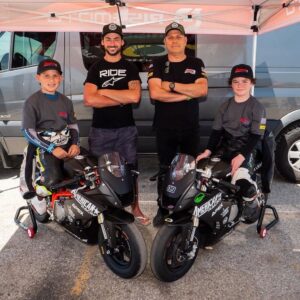
It’s not a long story because it was a really quick decision. While we worked in the winter, John Hopkins and I, we talked, and I shared with him my thoughts about the difficulty of getting young American riders to the World Championship. One of the problems is the money. Any young rider coming to the World Championship needs to come with big support. It’s not easy. It’s super-expensive to ride. The second is the level of riding. It doesn’t matter how good you are in the U.S., as soon as you get to Europe, the change in mentality, the food, the language, and the talent level of the riders over there, it’s super, super difficult for an American. I told John that I really would like to do something in the U.S., some kind of an academy or some program to start working with the young riders. At the same time last year, I also signed a contract with Sean Dylan Kelly to be his manager, and to start working with him while he’s still here in the U.S. Try to give him the best tools I can give him as a team owner and team manager. So, when it’s time for him to come to the World Championship, he can be super-ready. He came last year for the last race as a wild card in Valencia. I had a spot available for him. I knew it was going to be difficult for him, but I took the chance that we had the spot. I called him. I flew him all the way over there just to see his level and give him a feel for what it’s like to race in the World Championship, and not just in the (Red Bull MotoGP) Rookies Cup. I think it was really good. After that, I told him that I want to do something. I started talking with him about something that’s been on my mind for a long time. What can I do to make it happen in the U.S.? In Qatar, I spoke with DORNA. Obviously, DORNA right now is super, super, super pushing in what we are doing in the U.S. because they are very interested in the U.S. market. So, they gave us a lead. They told us to look at the young kids, even the really young. I came back over here. I started doing some research on what we have, and then I talked to Brandon Cretu from Ohvale. So, he gave me all the info. I sent an email to Wayne (Rainey) and Chuck (Aksland) to find out how we can be involved. But then, after a week, I told John, “Listen, we are spending time for nothing. Let’s do it all the way like a professional team in Europe. Let’s form a team. Let’s get two riders on Ohvale 160s and two riders on 190s. Let’s find us everything. Bring the bikes. Everything we can do to bring the kids to a professional team.” I spoke with Brandon again, and we ordered the bikes. Then I took a look at eight or 10 riders who Brandon thinks are the best in the U.S., and I just called the parents one by one. I told them, “This is Eitan Butbul. I’m from the World Championship. I want to start a new Mini Cup team in the U.S. for the Ohvales. I want your child to ride for me.” Most of the initial responses were a few seconds of silence. At first, nobody understood where I’m coming from. It was quiet and then they would say things like, “Are you serious, man? What’s going on with you?”
It’s funny. You took my next question right out of my mouth because I was going to ask you how you identified the riders that you did. We were familiar with some of them, particularly Kayla Yaakov. We’ve heard about her for a couple of years now. Jessie James Shedden, too. You have some fast, young riders that are involved in your team.
I got the list I think on April 10th. I did some research. I learned about every one of them. I think we signed the last one and we completed all the details with Ohvale and everything, including the livery design of the bikes, by April 30. So, it was 20 days. It was like running a marathon, but I knew we didn’t have time and I wanted to have the best team, even though most of the riders were privateers. I wanted to create the best team and give them the best package. Kayla, I heard about her, I think, two years ago because I think her dad or grandpa from Israel contacted me. And, she turned out to be one of the riders that Brandon recommended, so it worked out very well. All the parents are super happy. We put all four kids into our academy program, and we have a full development program between training with the bike and also physical training and mental training, too.
I love the fact that it is a comprehensive program. It’s not just that you’re sponsoring the team. You’re doing more for them with fitness and racecraft and all that kind of stuff, which is certainly a terrific way to develop talent. When these four riders show up at Road America at the end of June for our Mini Cup by Motul, with the bikes be branded “American Racing”? Will they look like Joe Roberts’ bike?

The Ohvale bikes are going to look exactly like the Moto2 bikes that we have in the world championship. Blue. They are going to be the same as we have in the world championship. The leather suits will be the same for all four riders. We’re going to have two big canopies, one for the riders and one for hospitality. I’m going to be there. John Hopkins is going to be there. The trainer from The W is going to be there, as well, to work with them. It’s the whole package.
That’s great that there is going to be that brand recognition between Moto2 and the Mini Cup. It’s a little early to tell, but based on your inclination and desire to cultivate the next American World Champions, do you envision any further or deeper involvement in MotoAmerica? Might you have a Junior Cup team or a Supersport team?
First, this is something from an hour ago that I finalized. I think you are one of the first that’s going to hear this. I’ll let you know later if you can just publish it. I need to get the final confirmation. But I just signed a contract with Rocco Landers. I’ve been talking with his dad because I wanted to put him in our program, and I want to manage him. We came to an agreement. Rocco is going to ride in the Junior Cup this year, and I need to get the final confirmation that he’s going to ride as well in Twins Cup. It’s a joint venture between American Racing and the Team Hammer. We’re forming a one-rider Twins Cup team. We’re going to have support from John Ulrich and Roadracing World because I don’t have the people on the ground over here in the U.S., mechanics, bikes and all this stuff. So, he’s going to support us. This way, I’ll help be able to help Rocco, too. So, this is our involvement in MotoAmerica with the four kids in Mini Cup, with Rocco in Junior Cup and Twins Cup, and also with some support for Sean Dylan Kelly.

I flew to Chuckwalla last Saturday to meet Rocco and his dad, as well as John Ulrich. We talked about how we can make everything happen. The way I see it, I’m build a kind of pyramid. I want a kid like Rocco or Sean or any kid, even Jesse or Kayla or the other two Ohvale riders on our team and not just give them support so they can race in U.S. I want to give them the confidence and ability that they can reach the World Championship. Since we have the team in the Moto2 championship, it’s easier for me to bring young riders to ride for me and give them all the support. So, with somebody like Rocco, who’s not even 16, with another two or three years here in the U.S., we can do a lot of work with him right here. So, when he’s ready for the World Championship, he can be at the level to fight for wins and championships. So, this is the goal of the American Racing academy, this is the goal of the program, to give those kids the chance to come to the world championship. John Hopkins and I believe there are a lot of talented kids over here. Many, many of them can be in the World Championship, but they need the right support and guidance. That’s my dream.
So, you have eight riders who you’re involved with right now in Moto2 and in MotoAmerica?
Yes.
That’s a huge commitment on your part. For the future of American road racing and Americans in the World Championship, I’ve got to personally thank you from the bottom of my heart for that kind of support. That’s just terrific.
This is the way I see it. I’m not a racer. I’m coming from the business side of things, and I can see it maybe from a different angle, but maybe this is what helps. I can see that managing a rider and helping him to get on a team or to sign a contract or to find sponsorship is good, but I think, at this stage in the U.S. riders need much more than that. It’s not just to manage them or tell them which teams to race for. To give them all the support they need, everything, all the training, everything from A to Z is key. Riders coming to race with me are getting everything A to Z. You don’t need to worry about anything. This is the goal. I know it’s a lot of commitment and from our side it’s a lot of investment at this time, but if I want to keep the team as American Racing and create good riders that come into the team and go to the World Championship I need to cultivate a new generation. There’s no doubt about it. I think the dream team is going to happen when we have two American riders racing for our team in MotoGP. That’s going to be a perfect scenario.
To purchase tickets for all MotoAmerica events, click HERE
For information on how to watch the MotoAmerica Series, click HERE
For the full 2020 MotoAmerica Series schedule, click HERE
